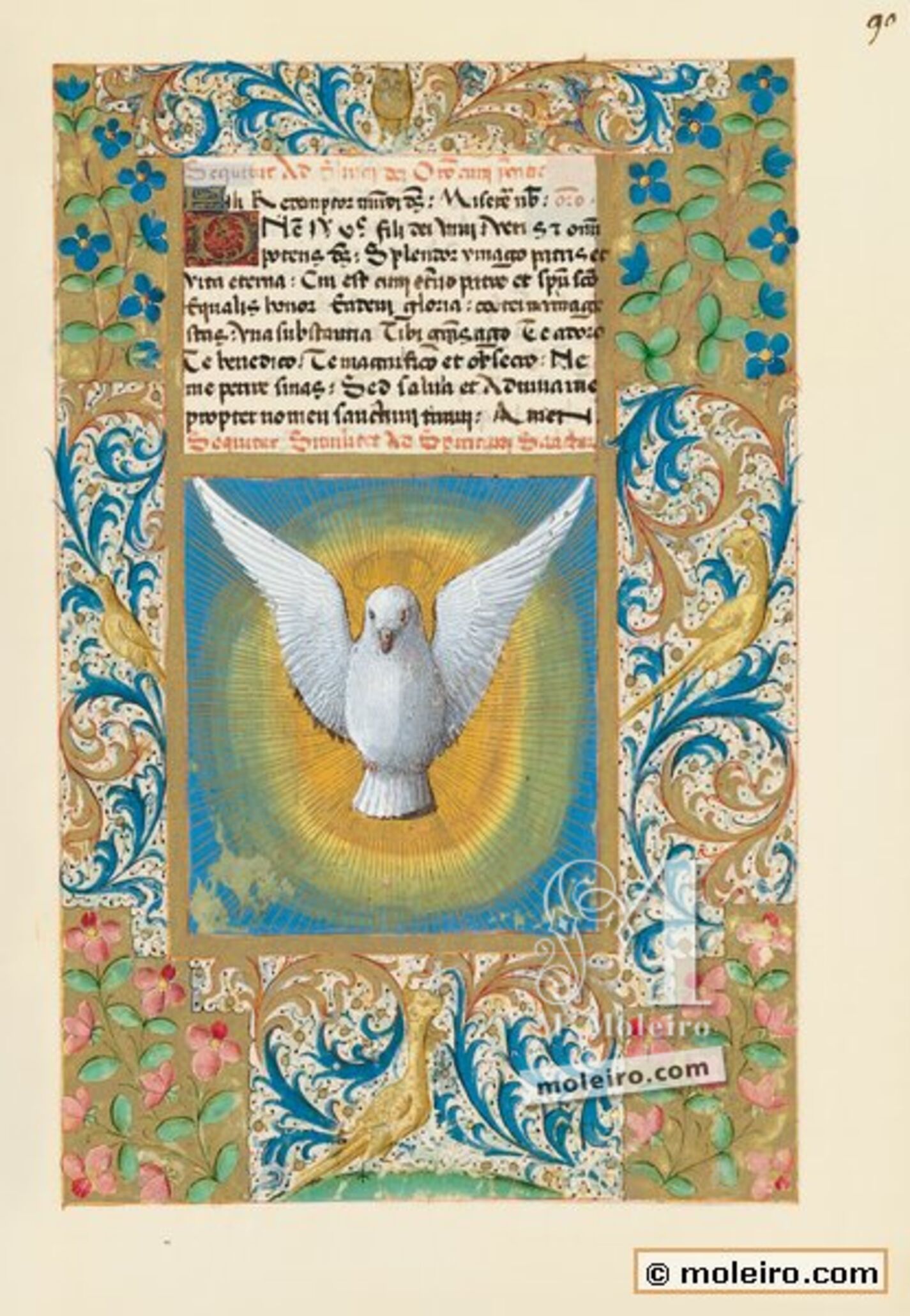This full-page image, filling all the framed inset, depicts just a foreshortened white dove in the sky with outspread wings and a nimbus around its head.Golden lines radiate out from its body which is surrounded by iridescent, orange, yellow and green light.The naturalism of the bird and its volume, conveyed by short, vertical lines, are notable. The portrayal of the third person of the Holy Trinity separately as a zoomorphic representation in books of hours was not unknown to Jean Colombe or his atelier, as can be seen in a miniature in one dated around 1480 and housed in Paris (Bibliothèque nationale de France, ms. lat. 1160, f. 27r).
The Holy Ghost was represented at first by fire or a ray of light but subsequently adopted the appearance of a dove in accordance with the Gospels of St Matthew (3:16), St Mark(1:10) and St Luke(3:22),which tells how the Holy Ghost descended upon Christ in the form of a dove after His baptism in the Jordan. The appearance is that of a white dove(
nivea columba) that descends from the sky in rays of light or is illuminated by the light emanating from its own body. Its beak and feet and sometimes its eyes too, are red like the blood of the martyrs. It was the object of separate worship in the Middle Ages. The idea of erecting a religious building dedicated especially to the Holy Ghost, dates back to Peter Abelard who founded the Oratory of the Paraclete, dedicated to the Holy Ghost the Comforter in 1122 in the dioceses of Troyes. The philosopher justified this innovation in a letter to one of his friends, saying, “This oratory, founded originally in dedication to the Holy Trinity, was called the Paraclete because in my desperation, I found peace in the consolation offered by divine grace. This name surprised many and some even vehemently attacked it under the pretext that it was forbidden to consecrate a church to either the Holy Ghost or God the Father alone, since according to tradition, it should be consecrated to either the Son alone or the Holy Trinity”. Despite the initial reticence, the initiative was successful, as demonstrated by the churches dedicated to the Holy Ghost in Rome, Florence and Naples.
